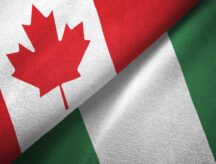Study: More newcomers are choosing to stay in Atlantic Canada
Statistics Canada has released data on provincial retention rates for newcomers both one year and five years after they arrive in Canada.
Overall, the report found that immigrant retention rates were on the rise in Atlantic Canada (Nova Scotia, New Brunswick, Prince Edward Island, and Newfoundland and Labrador) while retention rates in the prairie provinces of Saskatchewan and Manitoba showed a decline.
Data comes from the 2022 Longitudinal Immigration Database (IMDB). The database “examines the provincial and territorial immigrant retention rate [through] the percentage of immigrant tax filers who filed taxes in the province or territory where the immigrant intended to live in Canada, as indicated in their application for permanent residence.”
Discover if You Are Eligible for Canadian Immigration
Five-year retention rates were analyzed using tax filing data from 2012- 2016- and one-year rates used data spanning 2016-2020.
Ontario has highest overall rate of retention
Ontario, British Columbia, and Alberta showed the highest rates of retention after 5 years for newcomers who landed in 2016, all over 84%. Ontario had a retention rate of 93.1%.
The study also notes that Saskatchewan and Manitoba experienced a sharp drop in the rate of retention for newcomers who landed between 2012-2016. In Saskatchewan, the rate decreased by 14 % (from 72.2% to 57.9%) and Manitoba’s rate declined by 11% from 75.1% to 64.1%.
The same trend was apparent in one-year retention rates for these provinces. In Manitoba, the one-year retention rate dropped from 78.4% for newcomers admitted in 2016 to 74.9% for those admitted in 2020.
Saskatchewan had an even sharper decline, going from 75.7% in 2016 to 64.6% in 2020, an 11.1 percentage point drop.
On Canada’s east coast, New Brunswick, and Prince Edward Island (PEI) both reported an uptick in retention of immigrants who were admitted in 2016. New Brunswick reached its highest five-year retention rate at 56%. PEI still had the lowest retention rate in Canada at 30.9%. However, this is still almost 6% higher than the retention rate for those admitted in 2012.
One-year retention rates in both provinces showed no clear trends but the study notes that the one-year rate of retention in Newfoundland and Labrador grew from 55% for those admitted in 2016 to 66.4% for those admitted in 2020.
More Skilled workers staying in Atlantic Canada
The higher rate of retention for skilled workers in the Atlantic provinces can be linked to the launch of the Atlantic Immigration Pilot Program (AIP) in 2019. Following the launch of the AIP, Nova Scotia experienced a notable increase of 42.4 percentage points, from 21.5% in 2016 to 63.9% in 2020.
New Brunswick saw skilled worker retention rates of 65.8% in 2020 and Newfoundland and Labrador saw a bump of 18.7 percentage points between 2016-2020, from 31.3% to 50%.
The Atlantic Immigration Program is a regional economic immigration program that aims to facilitate the hiring of foreign nationals in Canada’s Atlantic provinces. Newcomers in the program benefit from a job offer from a designated employer and an individualized settlement plan for their family. This helps newcomers economically establish quickly and make connections to their communities.
These connections play a key role in where newcomers choose to settle long-term in Canada. According to the report, retention rates were higher among permanent residents who immigrated through family-class sponsorship programs.
To be exact, among newcomers admitted in 2016, 91.7% of immigrants sponsored by family stayed within the province they landed in.
Why it matters
The study notes that retaining economic immigrants has always played a key role in relieving regional labour shortages.
Most newcomers settle in large cities in Ontario, British Columbia, and Alberta, in part because of well-established immigrant communities.
This means that some of Canada’s other provinces, including rural regions, may struggle to maintain a robust labour force. To help incentivize newcomers to settle in these locations, most provinces and territories (except Quebec and Nunavut) have Provincial Nominee Programs (PNPs) to attract the economic immigrants who are best suited to local workforce needs.
Through the PNP, provincial governments nominate candidates to Immigration, Refugees, and Citizenship Canada (IRCC) for permanent resident status.
Regardless, the study found that skilled immigrants, such as those who arrive through the PNP, also saw a lower five-year retention rate, dropping from 79.6% in 2012 to 71.5% for 2016 admissions.
Still, economic immigrants who arrived in Canada through the Express Entry Canadian Experience Class (CEC) or through the caregiver pilot program had very high rates of retention. For example, caregivers admitted in 2016 were found to have filed taxes in their intended province or territory had a 94.9% retention rate while CEC candidates had a retention rate of 88.1%.
- Do you need Canadian immigration assistance? Contact the Contact Cohen Immigration Law firm by completing our form
- Send us your feedback or your non-legal assistance questions by emailing us at media@canadavisa.com






